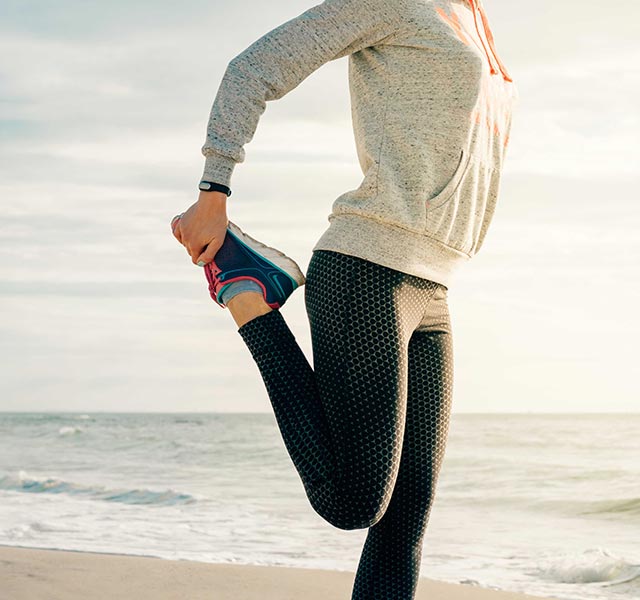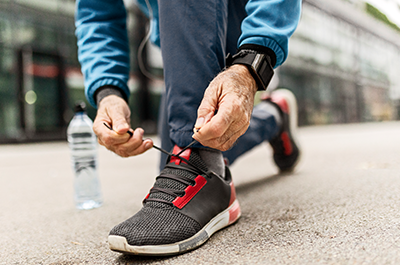Whether you run the sidewalks in your neighborhood or a footpath through the park, running on the same surface offers predictability that many runners enjoy. However, changing up your running surface can help take workouts to the next level.
“There are lots of benefits to running on different surfaces,” says Ashley Putnam, an athletic trainer at Henry Ford Health. “Challenging yourself by running on a different type of surface can help you get stronger, achieve new goals or just break up monotony.”
Any surface you run on — from your neighborhood sidewalk to the track at your local high school or a trail in the woods — has its pluses and minuses. No matter which surface you choose, it’s important to know what to expect and how to stay safe.
Here’s a quick rundown:
- Sidewalks: If you’re short on time, running the sidewalks in your neighborhood can make it easier to maintain a consistent running routine. However, sidewalks are harder on your joints than other surfaces. Wearing supportive shoes can help you avoid aches and pains.
- Paved trails: “For trails that are out and back, have a predetermined turnaround point, so you don’t accidentally run too far, beyond your abilities,” Putnam says. You should also consider whether a trail offers shade and water so you can avoid heat-related illness, like heat exhaustion.
- Dirt trails: There’s nothing like running on a dirt path through the woods. In addition to offering a change of scenery, the pliable surface is easy on your joints. Just keep an eye out for trip hazards like rocks and tree roots. One bad step is all it takes to end up with a sprained ankle.
- Track: “A track is one of the best surfaces for beginning runners,” Putnam says. “The flat surface and ability to see what’s ahead make it easier to focus on good technique.” On the flip side, running the curves of a track in the same direction puts uneven force on your legs that can lead to injuries like iliotibial (IT) band syndrome. You can avoid getting sidelined by occasionally running in the opposite direction.
- Sand: Running in sand is a great way to get stronger. “When you run on a beach, the sand gives way as you push off. This resistance makes muscles work harder, which builds strength,” Putnam says. However, it’s a different story if you’re running on wet sand: When sand gets wet, it’s nearly as hard as a sidewalk. If your joints are sensitive, you may want to stay on the dry side of the beach.
- Road: If you’re training for a road race, such as your first 5k, running on the road is a great way to prepare. You’ll want to keep an eye out for uneven surfaces like potholes and loose gravel. For your safety, choose roads that have a wide shoulder, wear brightly colored clothes and run in the opposite direction of traffic.
Regardless of the surface you choose, it it’s new to you or running is a fresh addition to your exercise routine, it’s important to give your body time to adjust, Putnam says. This means taking it easy at first and slowly building up your mileage to lower risk of injury.
If pain is getting the way of your running goals, we can help. Learn more about expert care and treatment for running injuries at Henry Ford. Make an appointment by visiting henryford.com or calling 1-800-HENRYFORD (436-7936).
Ashley Putnam, MS, AT, ATC, is an athletic trainer who works with patients as part of the sports medicine team at the William Clay Ford Center for Athletic Medicine in Detroit and at Henry Ford Medical Center – Columbus.



